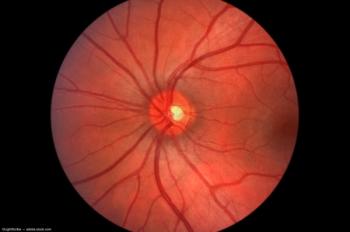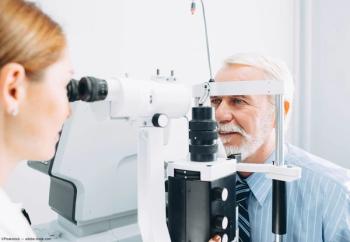
AMD
Latest News

4DMT shares data from Phase 1/2 PRISM clinical trial, 4FRONT Phase 3 study design
Latest Videos

CME Content
More News

Data from this trial will be reported ahead of AAO 2024 in Chicago, Illinois.

InMed Pharmaceuticals has been issued 3 US patents, one of which is for an ocular drug delivery formulation for potential use in AMD.

The next step for the research likely will focus on determining whether blocking GSK3 can reverse existing AMD damage, potentially leading to new treatment options.

According to the company, the pre-clinical safety and efficacy studies of its product have yielded positive results in 3 internationally recognized labs in India, Singapore and the United States.

According to the company, the FDA approval strengthens its biosimilar position in the US market.

The CPT code is the first to report photobiomodulation therapy in retinal disease.

The SOL-R clinical trial of is deemed appropriate for use as Ocular Therapeutix’s second adequate and well controlled study of axitinib intravitreal implant.

According to the company, the wearable smart glasses with both vision enhancement and assistance will be introduced at the American Retina Forum National Meeting

LUBT010 is a ranibizumab biosimilar to Lucentis that achieved its primary endpoint in this study.

The company is developing ixoberogene soroparvovec, its clinical-stage gene therapy product candidate, for the treatment of wet AMD.

According to the researchers, the findings suggest drusen formation is a downstream effect of AKT2-related lysosome dysfunction and points to a new target for therapeutic intervention.

The trial will evaluate repeat dosing of axitinib intravitreal implant, (AXPAXLI) for the treatment of patients with wet AMD.

Charles Wykoff, MD, PhD, gives an insight into first-time data from the phase 2, LUNA trial looking at Ixo-Vec at the annual ASRS meeting in Stockholm, Sweden.

Chase Ludwig, MD, shared an overview of his presentation, which covered real-impact of vitrectomy surgery on the progression of AMD at the annual ASRS meeting in Stockholm, Sweden.

According to the company, its implantable miniature telescope is a Galilean intraocular telescope designed to improve visual acuity and quality of life for patients with late-stage AMD.

Deepak Sambhara, MD, shared an overview of his paper-on-demand, which covered real-world safety and efficacy of aflibercept, 8 mg in the treatment of neovascular age-related macular degeneration at the annual ASRS meeting in Stockholm, Sweden.

Yasha Modi, MD, spoke with Modern Retina about the ASRS 2024: The DAVIO phase 2 trial and upcoming LUGANO phase 3 trial at the annual ASRS meeting in Stockholm, Sweden.

Nathan Steinle, MD, spoke with Modern Retina about the ongoing research on the durability of sozinibercept in combination therapy with anti-VEGF-A treatments at the annual ASRS meeting in Stockholm, Sweden.

A new analysis by researchers at the National Institutes of Health shows the benefit of taking AREDS2 formula in late AMD.

4D-150 Is being evaluated in wet age-related macular degeneration (AMD).

Adverum CEO Laurent Fischer spoke exclusively to Modern Retina about the 26-week interim analysis.

The key factor may be the control of inflammation.

Researchers from the UKB Eye Clinic, in cooperation with the University of Bonn and in close collaboration with basic and clinical scientists, have examined patients with early forms of AMD. The researchers focused on the so-called iRORA lesions, which are very early anatomical signs of retinal damage.

A novel formulation may prevent blood vessel growth and vascular leakage in the retina.

A team of researchers at the Ohio State University found that in mice an enzyme related to cell growth and division is a culprit in the blood vessel invasion in the back of the eye that causes blurred central vision in wet AMD.





















































